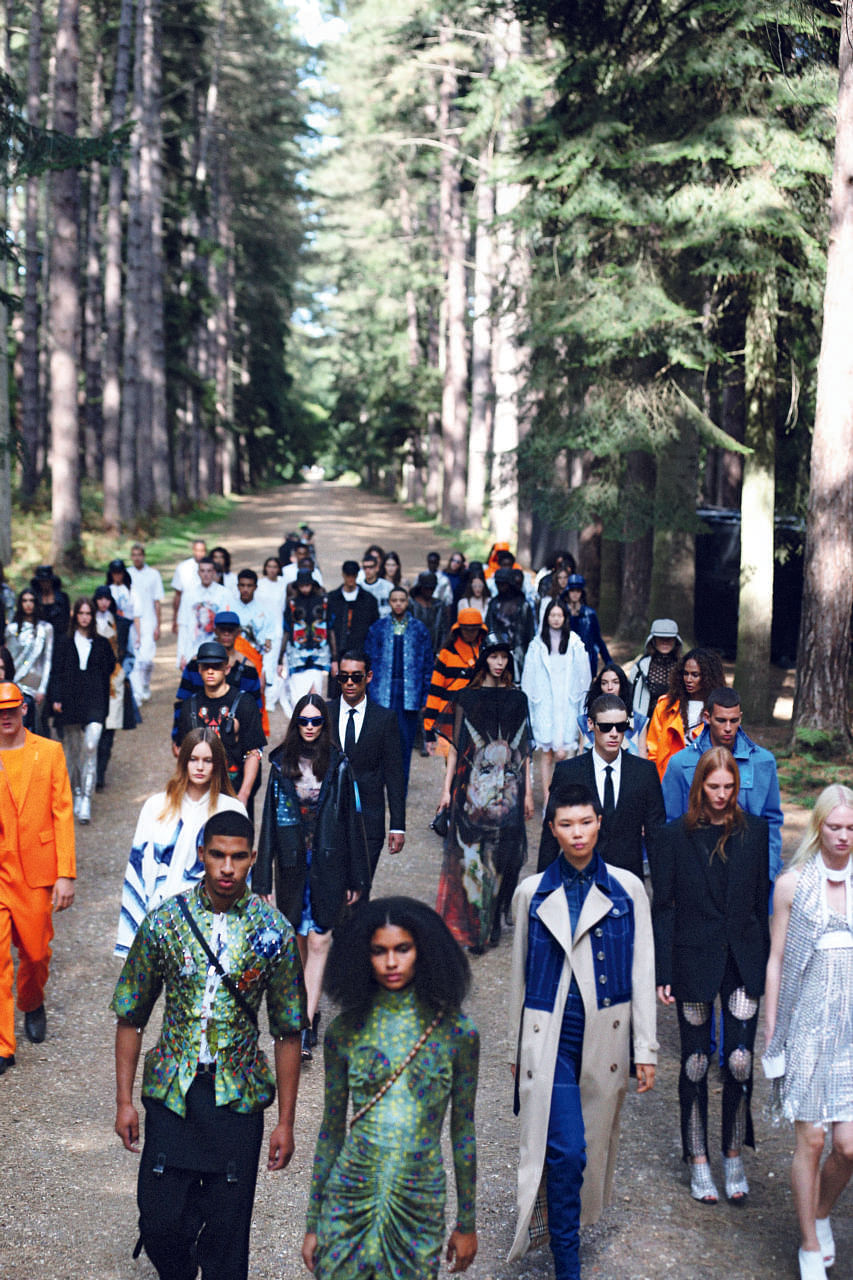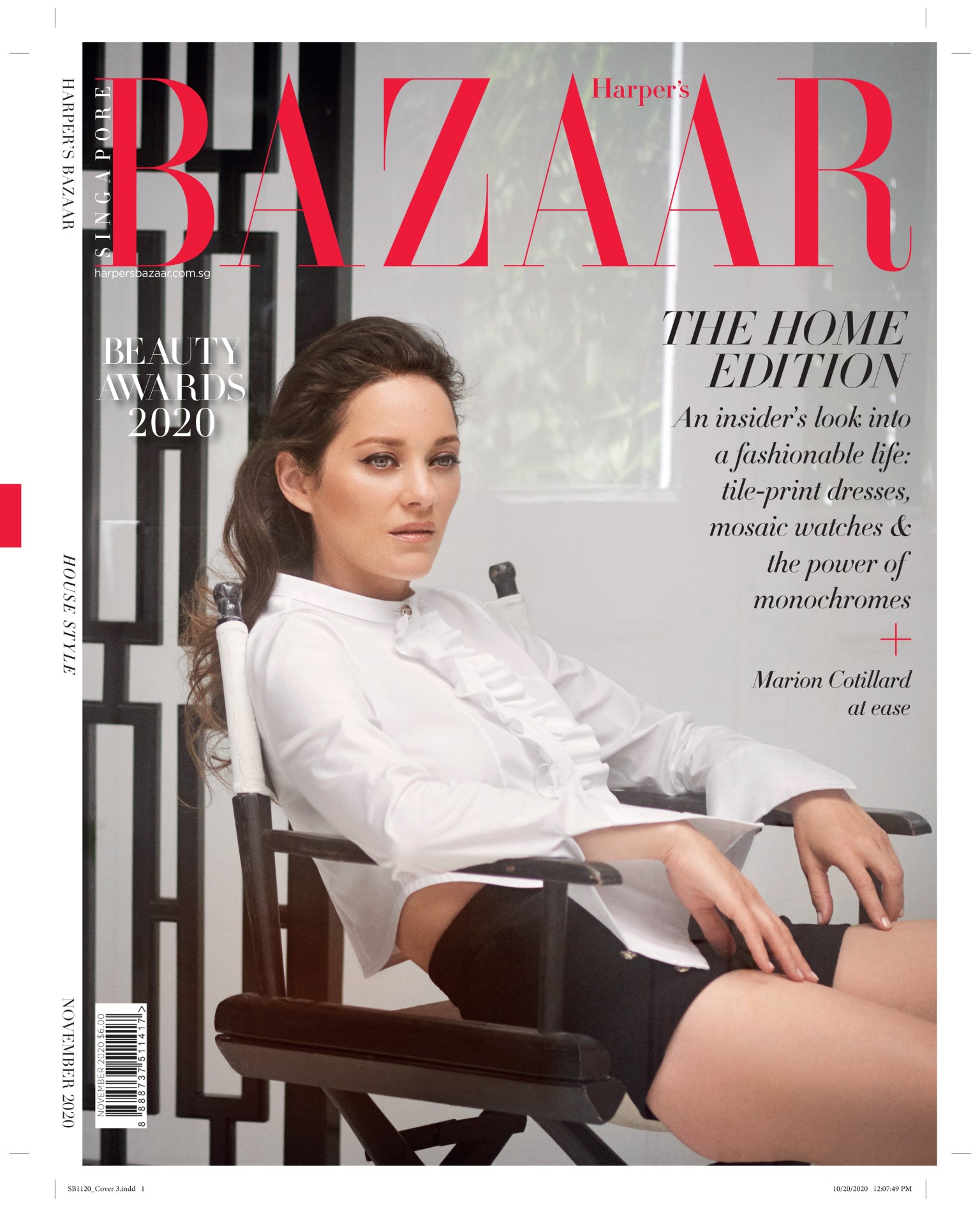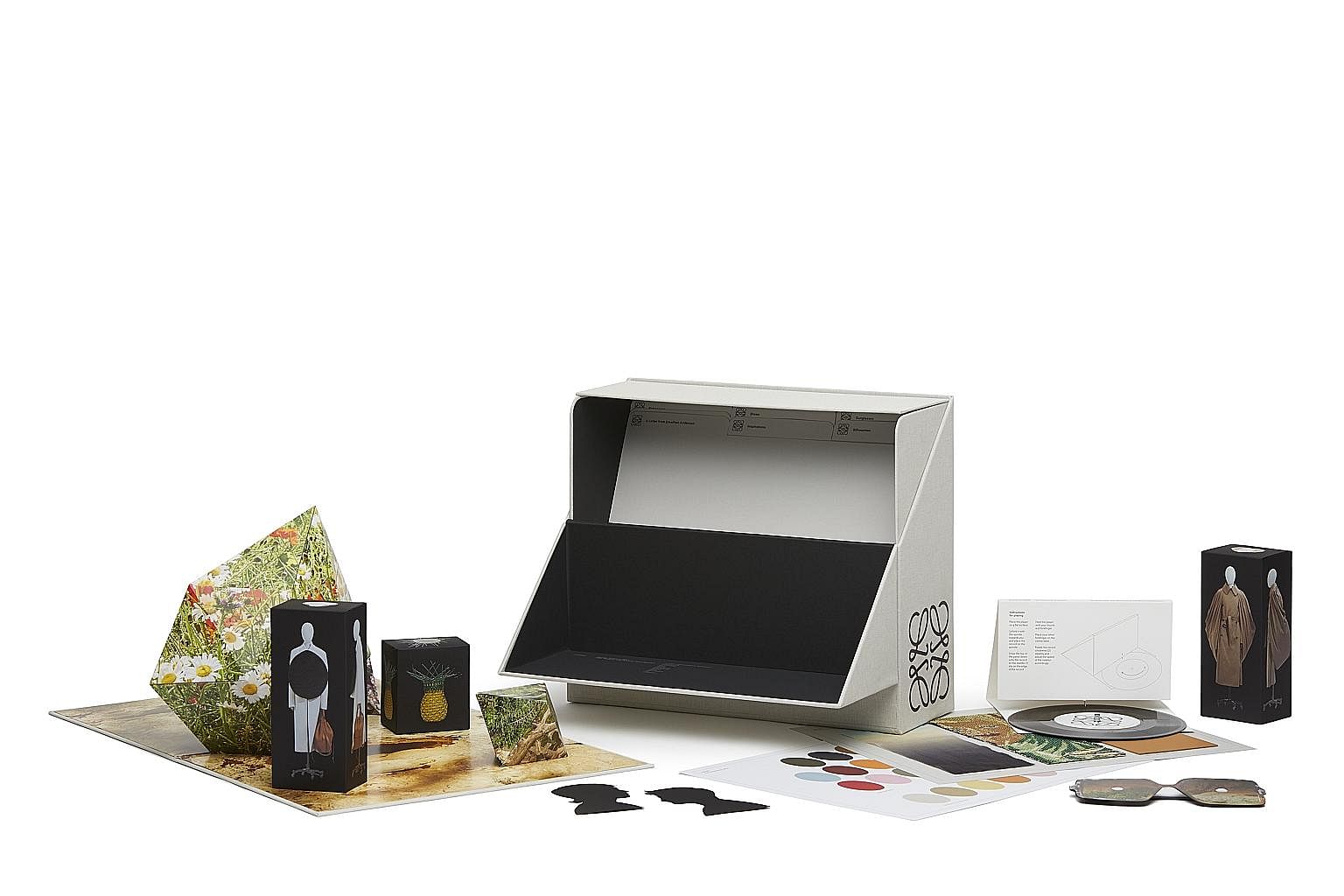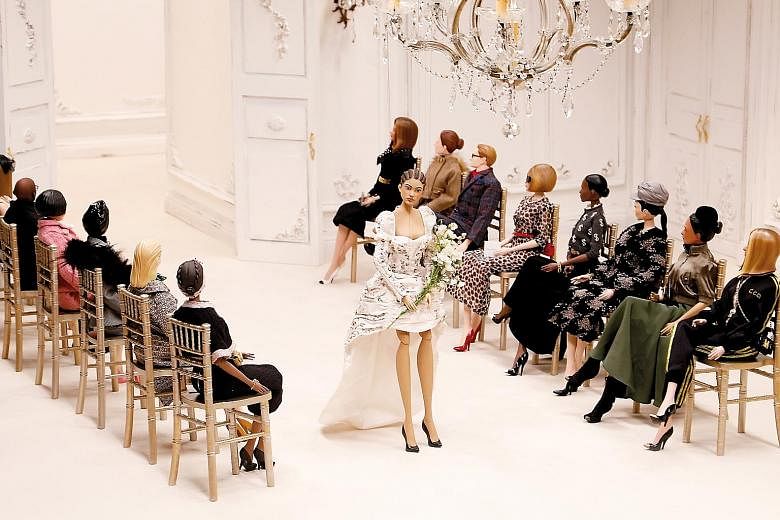This article first appeared in Harper's Bazaar Singapore, the leading fashion glossy on the best of style, beauty, design, travel and the arts. Go to www.harpersbazaar.com.sg and follow @harpersbazaarsg on Instagram; harpersbazaar singapore on Facebook. The November 2020 issue is out on newsstands now.
The Covid-19 virus that brought the world to a standstill also brought commerce to its knees, forcing businesses to adapt or be rendered extinct.
It was no different for fashion, with the pandemic forcing the industry to evolve at hyperspeed.
In fact, by the time this article was researched and written, some developments in the industry had already changed. That is how fast-paced fashion is.
The alarming pace at which fashion works to recuperate its losses has birthed a smorgasbord of presentation formats, unusually complex media strategies and new online platforms that have resulted in a constant influx of content.
Naturally, the production surge exacerbates pre-Covid-19 problems - conflicting deadlines, unrealistic timelines, exhausting manpower and a general lack of unity among various parts of the industry.
Against this backdrop, where is creativity headed in the future?
THE SHOW MUST GO ON... OR MUST IT?
Despite the criticism of flying thousands of editors, influencers and buyers across the world to watch a 10-minute show, fashion shows are still happening.
In mere months since the first big brands announced their exits from the fashion calendar - namely, Saint Laurent and Gucci in April and May respectively - the divide between brands and their stance on physical fashion shows is clear.
The variety of the spring/ summer 2021 shows is testament to this. Moschino cleverly used puppets to stage its show, although designer Jeremy Scott makes a brief real-life cameo.
Balmain put its 58 absent attendees on front-row flat screens, but still staged a traditional show with 103 looks.
Burberry put on a 20-minute presentation sans audience in a forest and streamed it on Twitch, a popular gaming service.

Brands that did not host physical shows produced videos instead - such as Dries Van Noten, MSGM and Salvatore Ferragamo - to various degrees of success.
For most, watching fashion presentations online lacked the energy of an in-real-life interaction.
So that begs the questions: How do you meaningfully engage with audiences? How do brands stand out? Can digital presentations do justice as a substitute for physical shows? What makes physical shows so unique in the first place?
Prada's spring/summer 2021 show, the first of Miuccia Prada and Raf Simons' partnership, provided possible answers. Via Instagram, the brand asked its audience to send in questions for both designers to answer in a conversation that took place after the show.
Having two equally iconoclastic designers working together is something practically unheard of, and so the occasion called for a new, different engagement format. It drew 48 million views on social sites Douyin and Weibo, two million on YouTube and 706,000 on IG TV. The collection was unanimously, critically acclaimed.
"During the lockdown, (I) realised how important technology is and how (it allows) an extension (of) ourselves," Prada said post-show. "Because we are doing a small film, we hope you can enjoy the clothes better."
The digital landscape is not an easy one to navigate these days. Digital media engagement has plummeted considerably since physical fashion shows have not been taking place.
According to brand performance cloud Launchmetrics, London Fashion Week in June had 55 per cent less social media engagement than it did in January this year.
In comparison, the gaming industry has benefited well from people staying home.
According to Rolling Stone, American rapper Travis Scott's in-game concert for Fortnite, the wildly popular battle royale game, led to an increase of 26 per cent in his listening stream in just one day and, as CNet reported, was ultimately seen by 28 million over five days.
For Prada to be able to top 16 times its views of its last womenswear show demonstrates how a multi-platform strategy is essential.
NEW FORMATS PAY OFF
Alternative formats call for even more complicated productions, but risk-taking - all the more scary in these times - has paid off for some.
In July, the couture shows achieved a good balance between engagement and creativity.
Maison Margiela premiered a documentary-style film directed by fashion photographer Nick Knight that documents creative director John Galliano's rigorous creative process in developing the collection with the atelier under new circumstances.
The film utilises Google searches, Zoom calls, surveillance footage from drones hovering in the studio and GoPros attached to various members of the atelier, including models and even one of their dogs.
Such transparency and voyeurism is fitting, coming from Margiela - its artisanal label has practically demystified couture savoir faire.
To see a full picture of how an atelier adapts to such a heavily digital process so candidly is comforting and sobering - and somehow completely relatable.
Alas, most people still want to dream when they see couture.

Dior's collection was presented as a fantasy film, following two travelling porters carrying Maria Grazia Chiuri's trunk of couture dolls through a land of nymphs, centaurs and other mythical creatures - definitely a new format for Chiuri.
While Dior created miniatures, Valentino made towering giants. The Italian house staged a "heightened" event at Rome's Cinecitta, which screened a glitchy film by Knight, after which the curtains drew to reveal models hovered above audiences like circus performers. The gowns were almost 4m tall.
As people have seen time and time again, in times of austerity, fashion brings its exuberance.
But perhaps the most innovative attempt in reconciling physical barriers was not from the three days of couture shows, but Loewe's spring/summer 2021 menswear collection by Jonathan Anderson.

The "show in a box" format, inspired by Marcel Duchamp's La Boite-en-valise (which translates roughly as "box in a suitcase"), gave editors a portable, intimate experience of its collection. It came with fabric swatches, a pop-up book of what would have been the runway set, a manual record player, mini printouts of accessories, inspirations and cutout paper silhouettes of the team.
What set this presentation apart was also its solid digital activation - video content was released hourly for 24 hours on IG TV and then aggregated on the Loewe site.
So while only editors received the complete box, everyone could enjoy the idea.
Downloadable, DIY content was also released, including patterns of a paper pineapple toy and Look 23, which can be printed and assembled.
Anderson has since repeated that format for subsequent collections, and with his spring/summer 2021 womenswear presentation, even evolved it into a "show on the wall" - where recipients of a gargantuan Loewe box set (it included life-size cutouts of the looks, wallpaper, brush, scissors and glue) can mount its contents on the wall.
It was a brilliant beacon of potential and ingenuity.

Anderson told The Business of Fashion: "I think it's going to be very difficult to go back. Everyone is wearing themselves on their sleeves."
If there is one lesson people have learnt from the recent shows, it is that the clothes must still be the stars. People have seen really good clothes in recent months, and perhaps physical limitations have helped ideas thrive.
As Pierpaolo Piccioli said of his decision to move Valentino's spring/summer 2021 show from the usual Paris to Milan: "The current situation has forced us to make an unusual decision... I feel energised when I can work on ideas, and this is the time for ideas to spread and grow."

